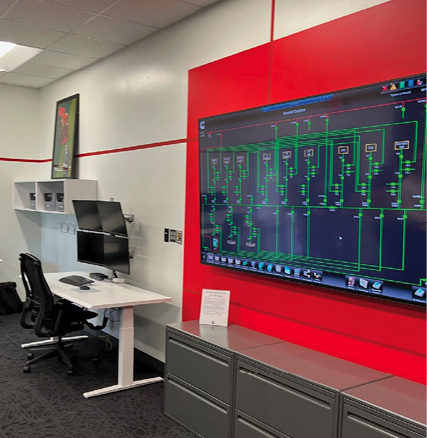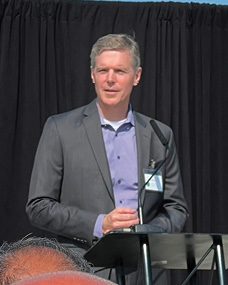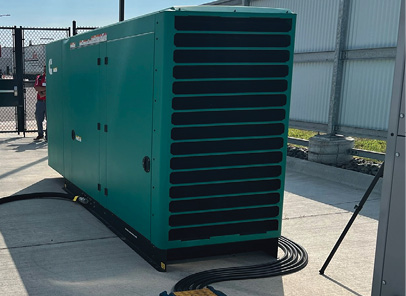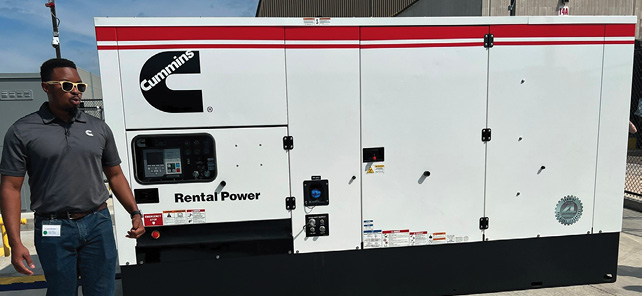New power integration center offers productivity and sustainability solutions

As a technology company committed to meeting the world’s sustainability challenges, Cummins offers a broad portfolio of power solutions. The company is driving innovation in the areas of advanced diesel, natural gas, electrification, fuel cells, alternative fuels, and advanced energy solutions. In addition, Cummins is working with partners to integrate those products and services in the autonomous vehicles of the future.
I had an amazing experience attending the Cummins’ grand opening event of a new microgrid lab called the Power Integration Center (PIC) last August. The PIC is located at their Power Systems facility in Fridley, Minnesota.


Gary Johansen, vice-president of engineering in the power systems business at Cummins and project sponsor addressing the attendees. CREDIT: TAMER ELBOKL
Cummins’ PIC is a microgrid lab designed by Cummins leading engineers and microgrid advisors for the configuration, testing, and validation of microgrid power systems.
The PIC is a state-of-the-art facility that allows for the configuration, integration, and testing of power system technologies including diesel and natural gas generator sets, photovoltaic (PV) solar panels, battery storage systems, fuel cells, transfer switches, switchgear, and system-level controls.
The components of Cummins’ integrated power systems are designed, built, and factory tested to ensure the highest reliability in the industry. That also includes the components that make up a microgrid as well as the digital solutions to allow for remote monitoring.
The need for reliable and efficient microgrid solutions has been driven by the increasing cost of operation (partially due to inflation), inclement weather conditions, changing governmental regulations, and the instability of power grids. The PIC allows Cummins’ customers to experiment with multiple potential power system solutions directly with Cummins engineers. This allows for time savings, cost-savings, and the ability to optimize a unique power system for any project.

“The PIC is the realization of a significant investment in engineering technology and innovation that will impact how companies use and build power systems to meet sustainability goals for a greener future,” said Gary Johansen, vice-president power systems engineering and project sponsor during his speech to the attendees. “Our customers are placing an even higher value on flexible and well-integrated solutions and this center will help us speed up the time it takes to deliver those new solutions,” added Johansen.
Cummins will be able to reduce the cost and time it takes to test and validate solutions and have the capability to showcase these solutions with customers and partners.
The PIC spans 1,860 m2 and consists of four main areas: a lab space including an outdoor test area, a main switchgear room, an electrical mezzanine, and an engineering control room. This allows for generator sets, energy storage systems, fuel cells, and inverters to be brought in for testing in a wide variety of possible microgrid configurations.
In the facility, we started our tour by visiting the outdoor test area, which includes five 500 kW test pads and two 2000 kW test pads, which can be connected as sources or loads. Our tour engineer explained that the two 500 kW programmable load banks allow for scenarios to be run using real customer load profile data, at up to 0.8 leading or lagging power factor.


Then, we moved indoors to the main switchgear room where three indoor switchgear lineups connect the different assets in the lab, as well as tie into the site utility connection. A 500 kW permanently installed roof-mounted PV system is connected to the lab, as well as PV and energy storage simulators for testing various types of inverters. Finally, the engineering control room includes workstations where technicians can access all elements of the microgrid system, and work collaboratively with customers and technical partners.
The wide range of Cummins’ products can greatly reduce emissions of several types, including oxides of nitrogen, which contributes to ozone, and particulate matter that impacts air quality issues, and greenhouse gasses like carbon dioxide (CO2) and methane (CH4). Adopting those cleaner technologies like near zero natural gas products and nearer to zero diesel can make an immediate, positive impact on the environment.
In the mining sector, microgrids can provide ground-breaking solutions to the challenges mining presents such as the locations and extreme operating conditions. This could help to drive sustainability up and costs down.





Comments